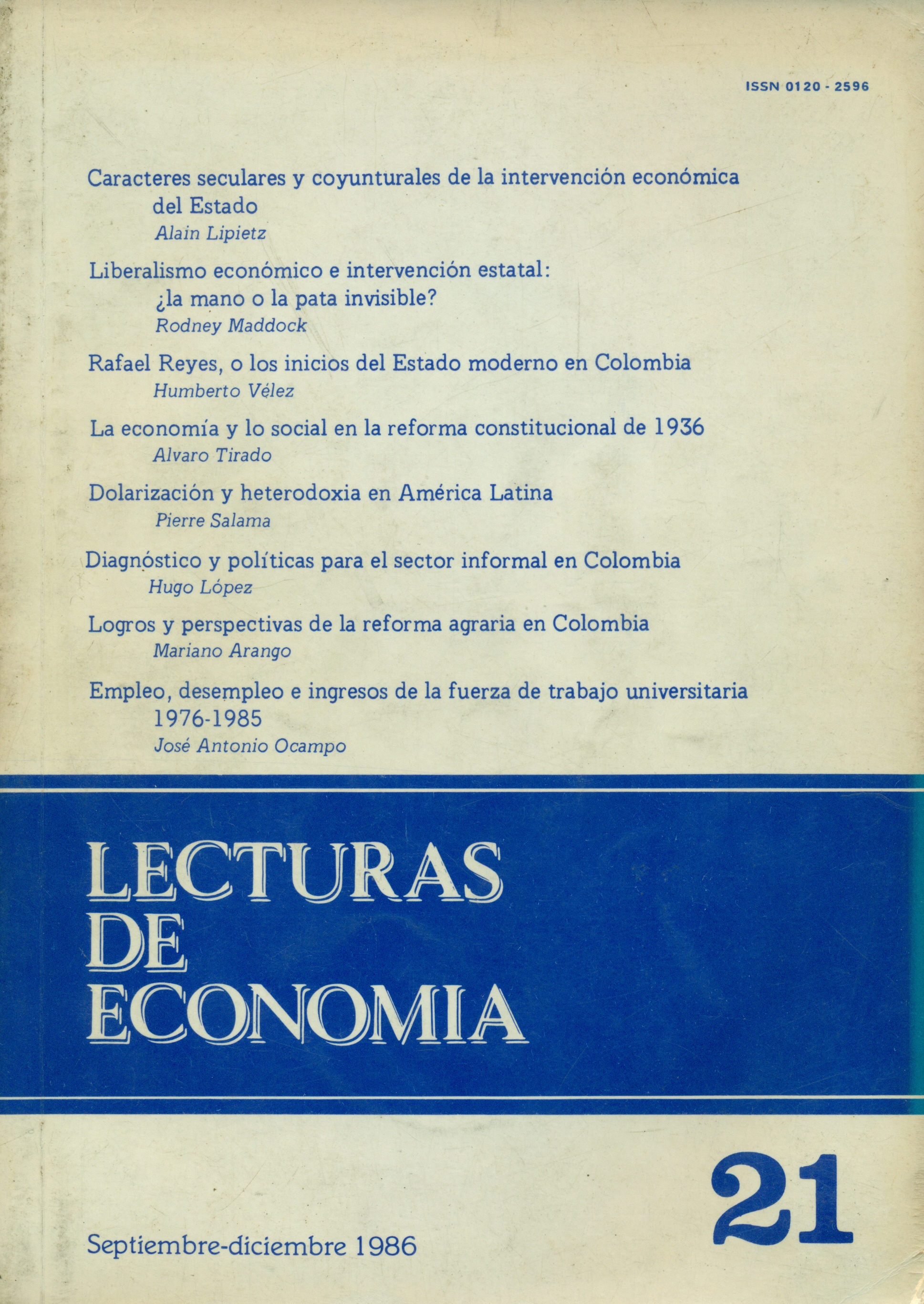Logros y perspectivas de la reforma agraria en Colombia
DOI:
https://doi.org/10.17533/udea.le.n21a7958Abstract
• Resumen. El temor de los terratenientes al impuesto a la tierra, el ascenso del izquierdista Movimiento Revolucionario Liberal -M.R.L.-, el miedo a la revolución cubana y la influencia de los programas de Alianza para el Progreso fueron los principales factores que influyeron en la aprobación de la Ley 135 de 1961 (sobre reforma agraria). El proceso reformista fluctuó en un comienzo entre una reforma de tipo marginal (adjudicación de títulos en zonas de colonización) y una de naturaleza convencional (escaso cambio en la tenencia de la tierra y ausencia de medidas complementarias de crédito, asistencia técnica e infraestructura). La reforma agraria colombiana presenta tres períodos: 1962-1966 (montaje), 1967-1972 (mareada acción reformista) y 1973-1984 (desmonte). Frente a los proyectos que actualmente se discuten en el Congreso Nacional se examina las posibilidades de reforma que están presentes en ellos, destacando, especialmente, sus estrategias frente a la economía campesina.
• Abstract. This paper places the current proposals for agrarian reform in their historical and economic context. It traces vicissitudes of the reform process from the “Ley 136” of 1961 to the present. The author considers three broad phases: the gradual evolution of the reform movement from 1962 to 1966, the period of marked reformist activity up 1972, and them the gradual decline of the imputus through to 1984. On the subject of the reforms presently being considered the author draws particular attention to their implication for rural small holders.
Downloads
Downloads
Published
How to Cite
Issue
Section
License
This page, by Universidad de Antioquia, is licensed under a Creative Commons Attribution License.
Authors who publish with this journal agree to retain copyright and grant the journal right of first publication, with the article licensed under a Creative Commons Attribution-NonCommercial-ShareAlike License allowing others to share it as long as they acknowledge its authorship and original publication in this journal.
Authors can enter into separate, additional contractual arrangements for the non-exclusive distribution of the journal's published version of the work (e.g., post it to an institutional repository or publish it in a book), provided that these arrangements be not for profit and the journal be acknowledged as the original source of publication.
Authors are permitted and encouraged to post their papers online (e.g., in institutional repositories or on their websites), as it can lead to valuable exchanges as well as greater citation of the published work.







